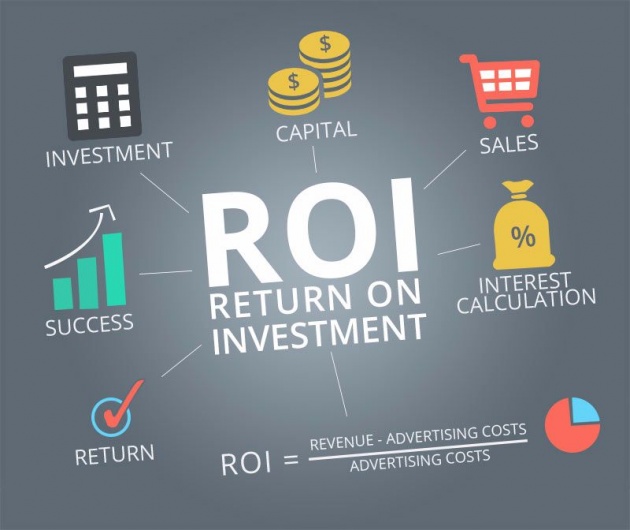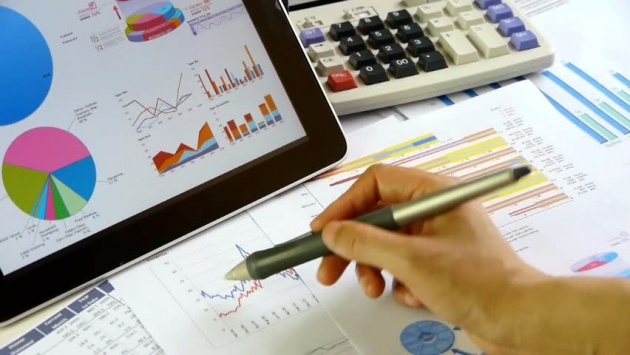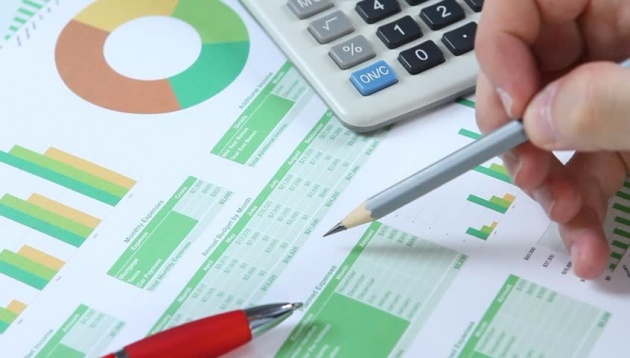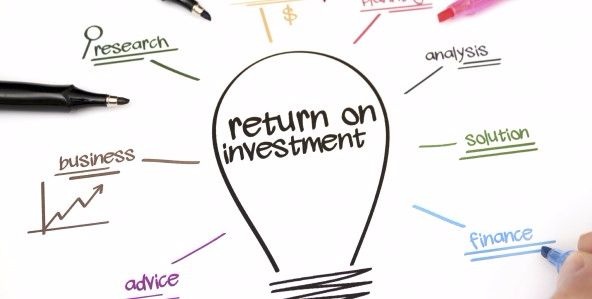
Image Credit : Google Images , uploaded by biztoboztv.wordpress.com
In my previous article I wrote some of the fundamentals of hiring third party for services, and its pros and cons - I am so happy that readers not only appreciated my work and commended but also recommended others as well on social media and bitlanders to have a look on my perspective of article, I hope same appreciation I will be getting in coming work as well.
Let’s move ahead - this is an open secret that every large company, wholesaler, retailer or even a small shopkeeper works for the profit. In order to calculate return of your business you have to include many of the investment components, in this article we are going to discuss how to calculate that return on your investment and which factors we will include in our calculation – and if we are getting insignificant percentage of return on our investment, how it can be maximized . As promised in previous blog, we will continue discussing our outlook of distributor’s ROI.
Return on investment (ROI).
In general return on investment refers to the percentage of profit that you are getting out of your business before taxes. We mostly see our return or profit over our gross investment, because “taxes” as it is we get from the consumers and then same we pay back to the government, that’s why we don’t include taxes in our calculation of profit.
Short overview of ROI can been seen here in video :
Video credit : Uploaded by Investor tracking academy ; via Youtube.com
Let me clear one perception of taxes first then we will move-ahead with ROI – there is a small hypothetical case study or our understanding, let’s see it first
Case study
- Government imposes 17% GST on goods
- Distributor is working on 4% margin with company
- Company offers 2% trade offer on its product.
In this case how much percentage of taxes company will get from its distributor and why?. Simply when company will calculate its net amount to get from the distributor as an invoice amount then it will include 11% of taxes, because 4% is the distributor’s income and he has to pay himself at the time of filling income tax and 2% is the trade offer that will go to the customer pocket as an income. That’s why just 11% will be given to the company.
Hope above scenario is cleared and this case will help us ahead while calculating ROI..
Components of ROI calculation:

Image credit : Taken from Google images , uploaded by shutterstock
As the concept of ROI is cleared till now, let’s see which components/headings we will include while calculating ROI. Keep one thing in mind that in ROI we will include not only investment on floor stock or company claims, we will also see market credit as well. In details following are the headings of Return on investment. Major headings are as follow ;
- Revenue on gross sale
- Company’s extra incentive for your profitability ( in ay month company can give you some extra amount )
- Target incentive ( In some companies its applicable )
- Company’s sharing in salaries , cost , or any operational expenses
- Variable expense ( Salaries of labour , KPO , SRs , utility bills , miscellaneous expenses etc)
- Fixed expenses
- Investment in floor stock
- Market credit ( IF any )
- Claims at company’s end
ROI calculation:
Formula:
- Return on Investment = Returns/ Net Investment
- Returns = Earnings – Expenses
- Earnings = Margin that company is offering, extra amount that company is paying in any month or target incentive
- Expenses = Direct Expenses + Indirect Expenses.

Image credit : Taken from google images , uploaded by shuuterstock.com
Calculation:
Before moving ahead let’s be clear that it is the fact that in most of the cases your distributor will not be working with your company only – if the case is true and distributor is sharing the resources then your direct and indirect expenses will differ here; All those suppliers, order booker or even KPOs who are in sharing will be splited for expenses as well for ROI calculation purpose as per the proration. Dedicated resources for the company will be included in direct expenses while shared will be in indirect expense.
Secondly when we take floor stock, market credit or claims then we will take average of all – because in FMCG mostly this the trend that distributor push the stock in market for secondary purpose , and that secondary mostly comes on credit that’s why last week of the month is not the true indicator of complete month’s activity , that’s why last week closing stock cannot be taken as final picture of floor stock.
Video credit : Uploaded by Quatere , via Youtube.com
Example:
Mr. Ganesh is the proud owner of his distribution firm M/S Sri Ganesh enterprises His firm deals with distributing 4 companies in total of which ABC Pvt. Ltd. Is one for which we need to calculate the RoI. The firm has 1 dedicated (exclusive) salesmen working for ABC Pvt. LTd. with a monthly salary of INR 6,000/- per month per salesman. Apart from this, the firm also has an accountant-cum-manager with a monthly salary of INR 5,000/- per month, pays a monthly rent for the godown which comes to INR 5,000/- per month, incurs electricity & miscellaneous costs (supply units, chai-paani etc.) to the tune of INR 5,000/- per month. Other expenses such as his son’s education and his daughter’s marriage which your dealer would want to include are not to be included.
( Example and calculation credit : Article by Senthilnathan Srinivasan , - Artcle link : www.linkedin.com/pulse/roi-calculating-distributor-performance-senthilnathan-srinivasan
All figures are assumptions
- Monthly Business (Turnover) inclusive of all 4 companies: 20,00,000/-;
- Monthly Business (Turnover) of ABC Pvt. Ltd. : 8,00,000/-
- ABC Pvt. Ltd.’s Company Margin: 8%
- Average Market Credit for ABC Pvt Ltd. Is 10,000/- INR
- Average Closing Stock for ABC Pvt. Ltd is worth 2,50,000/- INR
- Average Claims Outstanding in ABC Pvt. Ltd. Is worth 10,000/- INR.
Hence going by the formula:
ROI or Return on Investment = Returns/ Net Investment
Returns = Earnings – Expenses
Earnings = Gross Margin that the dealer enjoys (Usually 6% - 8% in FMCG companies)
Expenses = Direct Expenses + Indirect Expenses
Let’s calculate each element one by one:
- Earnings = Gross Margin = 8% of monthly turnover of ABC Pvt. Ltd. which is = 64,000/-
- Expenses = Direct Expenses + Indirect Expenses
- Direct Expenses = Salary of Exclusive Salesmen = 1*6000 = 6000 per month
- Indirect Expenses for ABC Pvt. Ltd.=( Contribution of ABC Pvt. Ltd’s Turnover to Total Turnover) * Total Indirect Expenses
- Total Indirect Expenses = Godown Rent + Manager’s Salary + Miscellaneous Expenses = 5,000 + 5,000 + 5,000 = 15,000/-
- Contribution of ABC Pvt. Ltd’s Turnover to Total Turnover = 8,00,000/20,00,000=40%
- Hence, Indirect Expenses for ABC Pvt. Ltd. = 40% of 15,000/- = 6,000/-
- Therefore Total Expenses = 6,000 + 6,000 = 12,000
- Hence Returns = Earnings – Expenses = 64,000 – 12,000 = 52,000
Net Investment = Avg. Closing Stock + Avg. Market Credit + Avg. Claims Outstanding = 2, 50,000 + 10,000 + 10,000 = 2, 70,000
Therefore ROI = Returns/Net Investment = 52,000/2, 70,000 = .1925 or 19.25%
(Calculation credit already given in start)
How to maximize ROI:

Image Credit : Taken from Goolgle Images , uploaded by paymeO.com
This is a long discussion that how ROI can be maximized, but precisely let me enlist few rules of thumbs:
1- Floor stock should be at minimum level
2- Market credit must be rationalize
3- Secondary sales should be focused at higher level
4- Route must be optimized for secondary sale , which will help you in covering expenses
Hope I have clarified maximum concept regarding ROI and its calculation techniques and its management .
Happy reading !!
Thanks,
Laghary.



